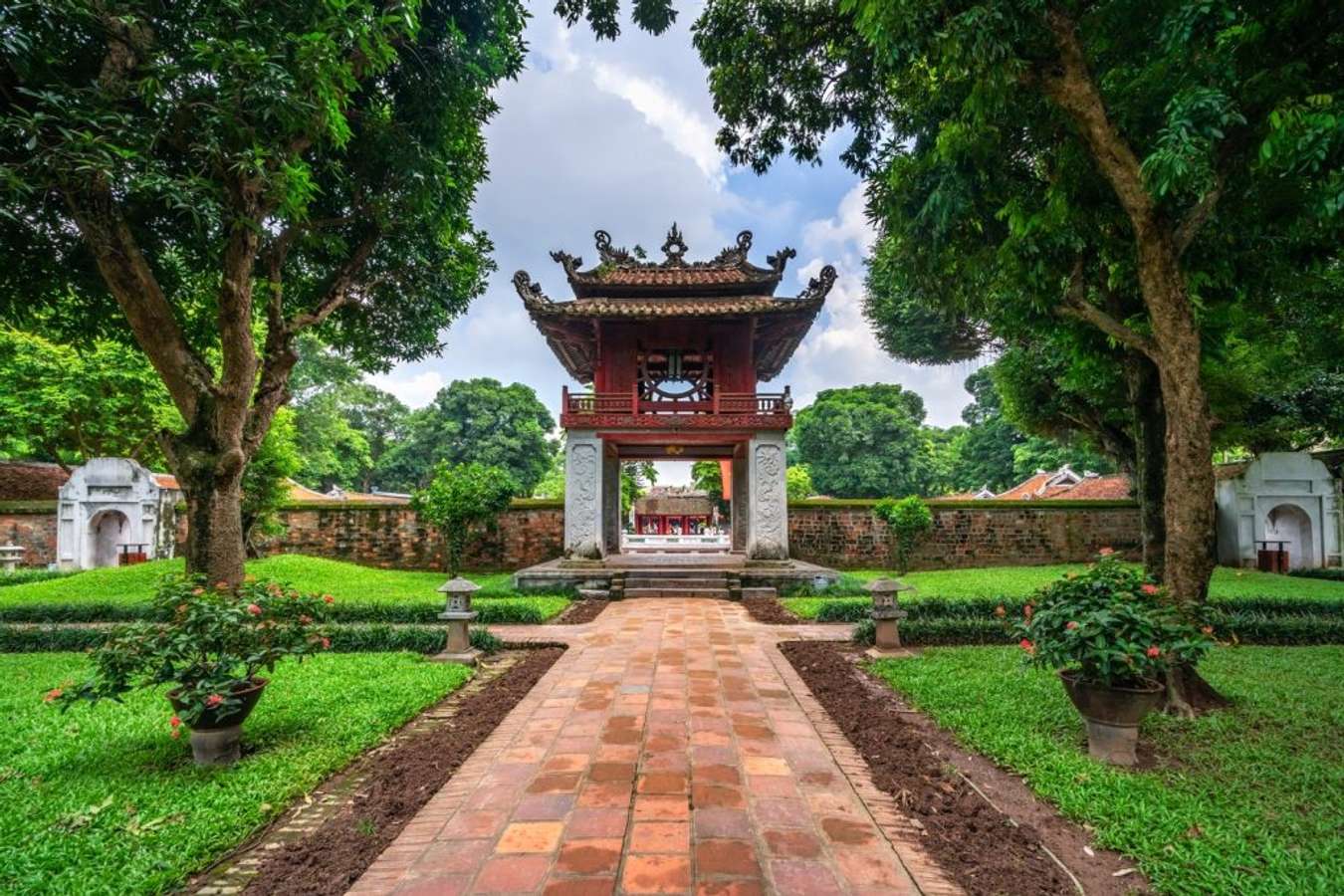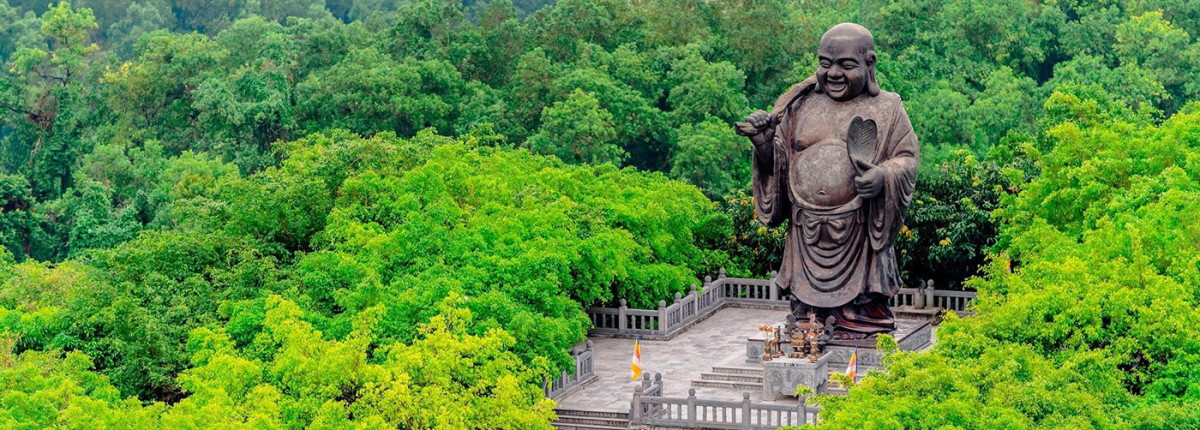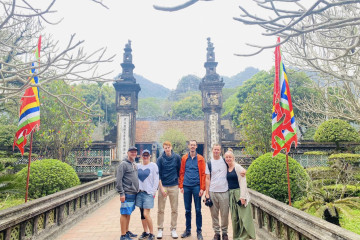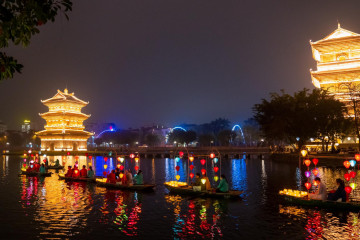Discovering Vietnam's Best Historical Sites: Famous historical places in Hanoi and Ninh Binh
Vietnam has a rich cultural heritage that dates back thousands of years. Hanoi and Ninh Binh are two of the best places in the country to experience this history and culture firsthand. Both cities are home to numerous historical sites that offer a glimpse into Vietnam's past, from ancient capitals to modern museums and monuments. Discovering the historical sites of Hanoi and Ninh Binh is the best way to truly experience the rich culture of Vietnam.

Ho Chi Minh Mausoleum
Historical Sites in Hanoi
1. Why should you visit Hanoi historical sites when traveling to Vietnam?

Temple of Literature- Vietnam's first national university
There are many compelling reasons why tourists should visit historical sites in Hanoi.
- Gain insight into Vietnam's rich cultural heritage: Hanoi has a long and fascinating history, spanning over a thousand years. The city's historical sites, such as the Temple of Literature and the Imperial Citadel of Thang Long, provide a window into Vietnam's ancient past and cultural heritage. By exploring these sites, tourists can gain a deeper understanding of Vietnam's traditions, customs, and way of life.
- Experience the spiritual side of Vietnam: Hanoi is home to many temples and pagodas, which are still active centers of worship. These sites offer a glimpse into the spiritual beliefs of the Vietnamese people and their practices. Visitors can participate in local religious rituals, observe traditional customs and ceremonies, and learn about the role of religion in Vietnamese society.
- Witness the fusion of traditional and modern architecture: Hanoi's historical sites showcase a unique blend of traditional and modern architecture. For example, the French colonial buildings in the Old Quarter coexist with ancient pagodas and temples. The contrast between old and new creates a distinctive atmosphere that captures the essence of Hanoi's culture and character.
- Appreciate the city's political and social history: Hanoi has played a pivotal role in Vietnam's political and social history. The city has been the capital of Vietnam for more than a thousand years and has witnessed numerous wars and revolutions. Historical sites such as Ho Chi Minh Mausoleum and Presidential Palace provide a glimpse into the country's political leadership and significant events that shaped Vietnam's modern history.
You might read: 5 Essential Tips to Savor the Best Vietnamese Street Food in Hanoi

Imperial Citadel of Thang Long- a Historical Site in Hanoi
2. The most 7 popular historical sites in Hanoi
- Imperial Citadel of Thang Long: A UNESCO World Heritage Site, the citadel served as the political center of Vietnam for 13 centuries. Tourists can explore the ruins of the royal palaces, the ancient gateways, and the underground passages.
- Hoan Kiem Lake and Ngoc Son Temple: This is a popular spot for tourists to take a stroll and admire the beauty of the lake. The temple is located on an island in the middle of the lake and is dedicated to the 18th-century national hero, Tran Hung Dao.
- Temple of Literature: This is Vietnam's first national university, founded in 1070. The temple is dedicated to Confucius and his disciples and contains numerous pavilions, courtyards, and altars.
- Ho Chi Minh Mausoleum: This is the final resting place of Vietnam's iconic leader, Ho Chi Minh. Visitors can pay their respects to the former president and admire the grandeur of the mausoleum's architecture.
- Hanoi Old Quarter: The old quarter is a maze of narrow streets and alleyways that date back to the 13th century. The area is known for its unique architecture, bustling street markets, and traditional crafts.
- Vietnam Museum of Ethnology: The museum showcases Vietnam's ethnic diversity through exhibits of traditional clothing, artifacts, and cultural practices. Visitors can learn about the customs and traditions of 54 ethnic groups in Vietnam.
- The Tran Quoc Pagoda: This pagoda is also a famous historical site in Hanoi that is worth visiting. It is located on a small island on the west side of West Lake and is considered to be one of the oldest pagodas in Vietnam, dating back to the sixth century. The Tran Quoc Pagoda is also a popular spot to watch the sunset over West Lake, making it a picturesque and tranquil destination for tourists to visit.
You might read: Top Attractions in Hanoi: Key places, ticket price, open time, things to do - updated 2023
Historical Sites in Ninh Binh
1. Why should international tourists visit Historical Sites in Ninh Binh?

Bai Dinh Pagoda - the largest pagoda complex in Southeast Asia
- The ease of transportation: You should visit historical sites in Ninh Binh because the region is located just less than 2 hours south of Hanoi. From Hanoi, you can catch a bus to Ninh Binh and discover this area on a day trip. The price for transportation is reasonable.
- A combination of stunning natural landscapes and rich cultural heritage: Ninh Binh is often referred to as the "Halong Bay on land" because of its similar limestone karst formation to the famous UNESCO World Heritage Site. Visitors can take a boat ride through the Tam Coc or Trang An river systems and witness the stunning scenery, including rice paddies, caves, and towering mountains. Also, the region is home to several ancient capital cities, pagodas, temples, and churches that showcase the country's history and traditions. These sites offer visitors a chance to learn about the architecture, art, and religious practices of the Vietnamese people.
- A peaceful place to learn Vietnamese culture and relax: Ninh Binh is a less crowded and touristy destination compared to other popular tourist spots in Vietnam. This means that visitors can experience a more authentic and less commercialized side of Vietnam. There are also many opportunities for outdoor activities such as hiking, cycling, and bird-watching.
2. How to Get to Hanoi and Ninh Binh

To get to Ninh Binh from Hanoi, visitors can choose from several transportation options. The most convenient and recommended way is to take a private car or taxi, which can be arranged through hotels or travel agencies. The journey takes around two hours, and you can enjoy the scenic countryside views along the way. Another option is to take a train from Hanoi to Ninh Binh, which takes around 2-3 hours, depending on the type of train. However, the train station in Ninh Binh is located about 7 km from the city center, and visitors will need to take a taxi or motorbike to reach the historical sites. Therefore, a private car or taxi is the most recommended mode of transportation.
Read more: The top 5 best Ninh Binh day tours from Hanoi 2023
3. Top 5 famous historic sites to visit in Ninh Binh

Hoa Lu Ancient Capital - the first capital of Vietnam
- Hoa Lu Ancient Capital - a former capital of Vietnam during the Dinh and Le dynasties, featuring impressive temples and shrines.
- Tam Coc - Bich Dong - a scenic area with beautiful limestone mountains, rice paddies, and caves. Visitors can take a boat ride along the river to explore the area.
- Trang An Landscape Complex - a UNESCO World Heritage Site that features a system of caves, valleys, and rivers surrounded by limestone cliffs.
- Bai Dinh Pagoda - the largest pagoda complex in Southeast Asia, featuring several temples, shrines, and a giant bronze Buddha statue.
- Phat Diem Cathedral - a unique and beautiful Catholic church that features a blend of Vietnamese and European architectural styles.

In conclusion, Hanoi and Ninh Binh are home to some of Vietnam's best historical sites, which presents the country's rich cultural heritage. From the Temple of Literature in Hanoi to the Hoa Lu Ancient Capital in Ninh Binh, these sites are not only important historical landmarks but also great places to explore and learn about Vietnamese culture.
Read more: Things must know before taking a Ninh Binh tour: Ninh Binh Travel Guide 2023
See our best tour: Hoa Lu- Mua Cave- Tam Coc- Bike- Bich Dong Pagoda













